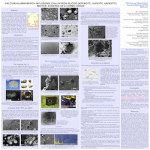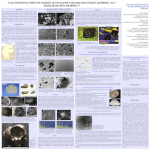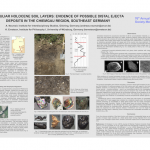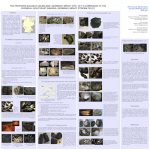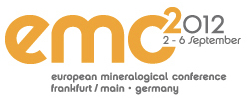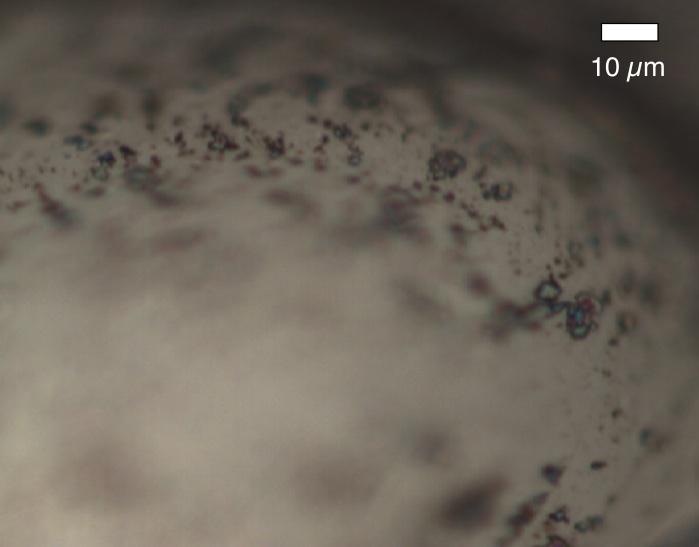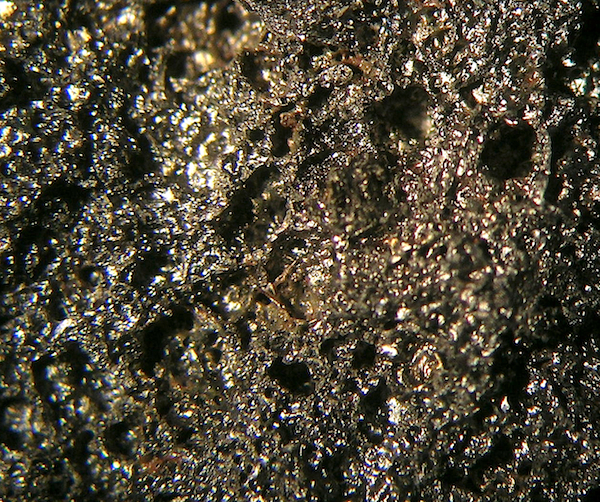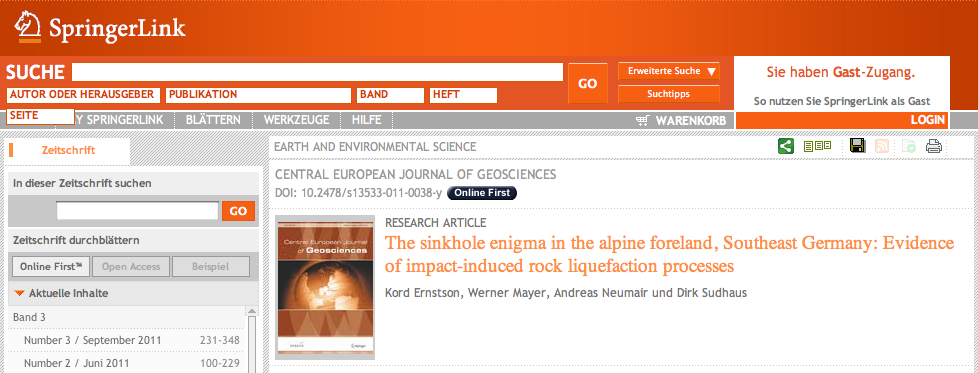by CIRT – Chiemgau Impact Research Team
The abstracts for the 74th Annual Meeting of the Meteoritical Society, August 8-12, in Greenwich, England, UK, have now been published in the Internet. With regard to the Holocene Chiemgau large meteorite strewn field three contributions are especially interesting because of their immediate relation to this impact event. The abstract pdfs can be downloaded:
[1] A POSSIBLE NEW IMPACT SITE NEAR NALBACH (SAARLAND, GERMANY)
E. Buchner, W. Müller and M. Schmieder
www.lpi.usra.edu/meetings/metsoc2011/pdf/5048.pdf
[2] NALBACH (SAARLAND, GERMANY) AND WABAR (SAUDI ARABIA) GLASS – TWO OF A KIND?
M. Schmieder, W. Müller and E. Buchner
www.lpi.usra.edu/meetings/metsoc2011/pdf/5059.pdf
[3] IMPACTITES AND RELATED LITHOLOGIES IN GERMANY – CURRENT STATE OF KNOWLEDGE
M. Schmieder, W. Müller, L. Förster and E. Buchner
www.lpi.usra.edu/meetings/metsoc2011/pdf/5060.pdf
Among the authors W(erner) Müller is particularly singled out who has only recently performed meticulous field work near the town of Nalbach in the Saarland region near the French border. He sampled a large amount of peculiar rocks and natural glasses as well as suspected iron meteorites. From these finds he concludes the possible existence of a meteorite impact only in younger times, and as the discoverer of the phenomenon he has published an article in the Scribd scientific internet forum:
Prims: a possible Holocene meteorite impact in the Saarland region, West Germany
which may be clicked HERE
This postulated meteorite impact is shortly attended by the other authors in the above-mentioned abstracts where the original Scribd article is referred to only in abstract [2], but strangely not in abstract [1] obviously standing more to reason thematically.
Amazingly similar: Finds from the Saarland suspected impact and the Chiemgau impact.
The close relation to the Chiemgau impact arises from Werner Müller’s Scribd article and, hence, comprises the abstract articles of Buchner et al. and Schmieder et al. As can be read in the article of Müller and especially pointed out by him, many striking parallels to finds in the Chiemgau meteorite crater strewn field are obvious:
— pebbles and cobbles showing mechanical load and high-temperature signature in the form of glass coating and interspersing the in most cases sandstone samples
— polymictic breccias
— slag-like melt rocks
— glass as matrix of melt rocks with various rock fragments
— glass-like carbon
— spherules
— probably shock-induced spallation effects in melt rocks
The reader is encouraged to take a look at the images in Werner Müller’s Scribd article and to compare them with the Chiemgau samples. Images are to be found on the website https://www.chiemgau-impact.com/petrographie.html and in the Ernstson et al., 2010 article or, as originals, in the Grabenstätt impact museum
Although there is so far no definite age for the postulated Saarland impact, W. Müller, because of first-sight field impressions and considering the in most cases very fresh glasses, clearly favors a Holocene age. Hence, with regard to the Chiemgau impact Holocene age the obvious question arises whether the Chiemgau and Saarland impacts may belong to the very same cosmic event. This can be imagined given the cosmic projectile was already in disintegration when approaching Earth (like, e.g. in the 1994 Shoemaker-Levi-9 comet crash with Jupiter) and in the end leaving impact scars in an even much larger strewn field than hitherto assumed for the Chiemgau impact.
From this viewpoint of a relation of both phenomena it is rather remarkable if the CIRT research project on the Chiemgau meteorite impact achieves considerable support by two of the abstract authors (E. Buchner, M. Schmieder) as is well known confirmed opponents of the CIRT research and of the Chiemgau impact at all. Notably the hint of Buchner et al. [1] to a possible meteoritic airburst to have produced the Saarland impact signature raises attention because such a possibility has already been discussed for the Chiemgau impact event in the context of the formation of some peculiar craters there (e.g. Ernstson et al., 2010, S. 92-93).
A comment on the abstract article of Schmieder et al. [3] is being added. The authors refer to several structures in Germany for which a meteoritic origin has been postulated, “[cit.] however, all of these geologic features currently lack evidence for shock metamorphism and/or meteoritic matter as proof for impact”. Among these structures, the Chiemgau impact has been classified, thereby referring to the 30 pages article ‘Ernstson K. et al. 2010. J. Siberian Fed. Univ. Engin. Technol. 1:72–103 (HERE to be downloaded)‘ Either have Schmieder and Buchner never read this basic and comprehensive article about the Chiemgau impact or they calculatedly conceal that on p. 82-83 under the heading 8. Shock metamorphism generally accepted impact shock effects in rocks from the Chiemgau craters together with several photomicrographs are reported. The shock effects include multiple sets of planar deformation features (PDFs) with up to five sets in one quartz grain, and diaplectic glass requiring even higher shock pressures of formation than do PDFs.
This keeping silence about proofs for the Chiemgau impact and at the same time claiming the Chiemgau impact is not confirmed [3], is rather odd with regard to the fact that comparably unambiguous impact proofs for the Saarland phenomenon could so far not be presented [1].
Owing to the promising similarities between Chiemgau impact material and material from the Saarland area we can but encourage the colleagues to perform continuing research. We are glad to see that the research of Buchner and Schmieder on the Saarland impact contributes to a better understanding of the Chiemgau impact, even though their work features some deficits and oddness.



































